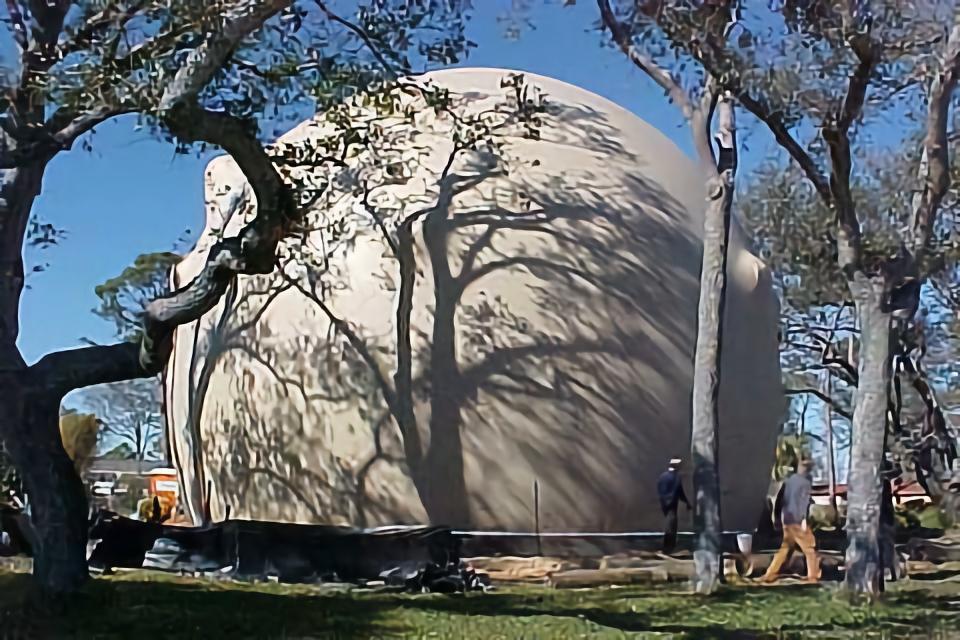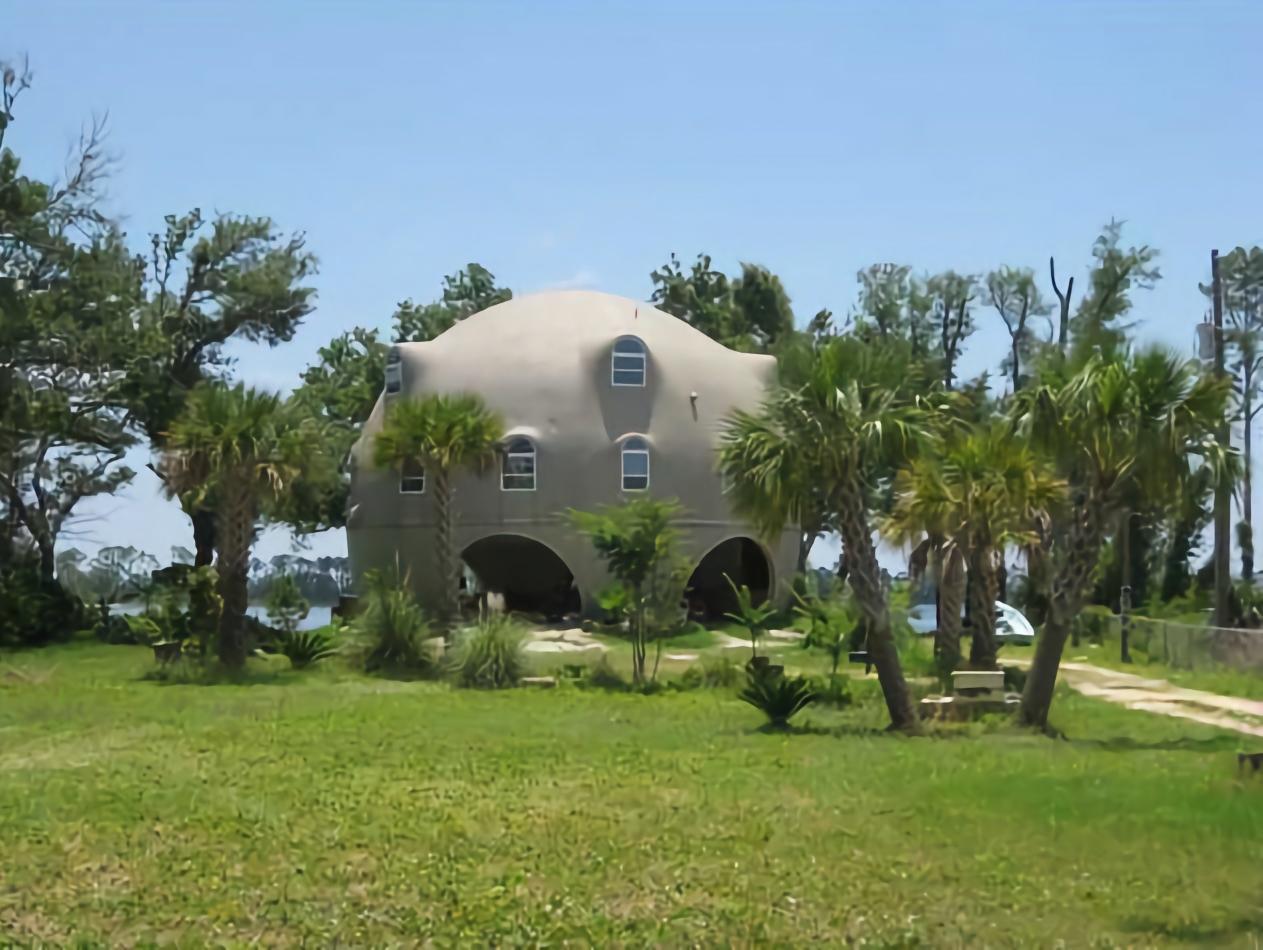Hurricane Ivan and the Magenheimer’s Search

The inflated Airform membrane is a 48-foot diameter ¾ sphere that’s 42 feet in diameter at the base and 35 feet tall.
Hurricane Ivan’s disastrous rampage through Pensacola, Florida, in 2004 sent Bill Magenheimer on a search.
He said, “Ivan totally destroyed my home—which was brick—and that also happened to ten or fifteen other homes just in this immediate area. So, I started seriously considering alternatives to conventional buildings because they didn’t seem to hold up.
"At that point,” Bill continued, “I had already seen the dome (Dome of a Home) built on the beach. I have not been inside it, but I have seen the building plans, and just the idea of a stronger house got me interested.”
A month later, Bill participated in a Monolithic Dome Builders Workshop. Rebuilding plans that focused on a Monolithic Dome home just 50 feet from the water followed.
In December 2004, Bill and his wife, Margo, witnessed the groundbreaking. Then on January 27, which just happened to be Margo’s birthday, they watched the completion of the foaming.
The Magenheimers’ dome home is 42 feet in diameter and 35 feet high. The dome’s ground level, just eight feet above sea level, is designed with four flow-through passages for storm surges. Ordinarily, however, that under-the-house space will function as a garage.
The two upper levels will include three bedrooms, two full bathrooms, one half bathroom, an exercise room, a kitchen, a great room with living and dining areas and an elevator.
Bill said that they had no problem with approvals of and permits for their construction plans, which included an energy rating mandated by the State of Florida. “Gulf Power did the energy rating, and we got a very good score: 86.8.”
Based on the information given to Bill by both Gulf Power and his air conditioning contractor, that score may qualify his Monolithic Dome home for a lower-interest loan and a Federal tax credit.
Jeff Hatch, Gulf Power’s Energy Consultant who did the Magenheimers’ energy rating, said that the evaluation considers all aspects of a structure’s construction: building materials, insulation, windows, doors, heating, air conditioning—even the structure’s site orientation.

The finished Monolithic Dome beach house near Pensacola, Florida. The base floor is a garage, while the second and third floors house three bedrooms and three bathrooms. The house is only eight feet above sea level, so the garage is where storm surges will go during hurricane weather.
Although Mr. Hatch initially did the evaluation just by reviewing construction plans, he said that what he read piqued his interest—so much so that he drove out to see the dome.
“This technology was new to me,” Mr. Hatch said. “It looks great. I’m glad I saw it, and I plan to go back once it’s done.”
That, according to Andrew South of South Industries, the Dome Structure Contractor on this project should be in late 2006. For Bill and Margo, it can’t be soon enough. Bill said, “We hope to get in before the storm season starts in July. We will do some of the inside finishing ourselves after we move in—just some of the simple things.
"We’re really looking forward to it. With geothermal heating and air conditioning, it’s a house that makes sense. All the engineering leads us this way. We have a peculiar problem right here along the water, and I think this is a solution. I don’t know if it’s the only one, but it’s the one we’ve chosen,” he concluded.